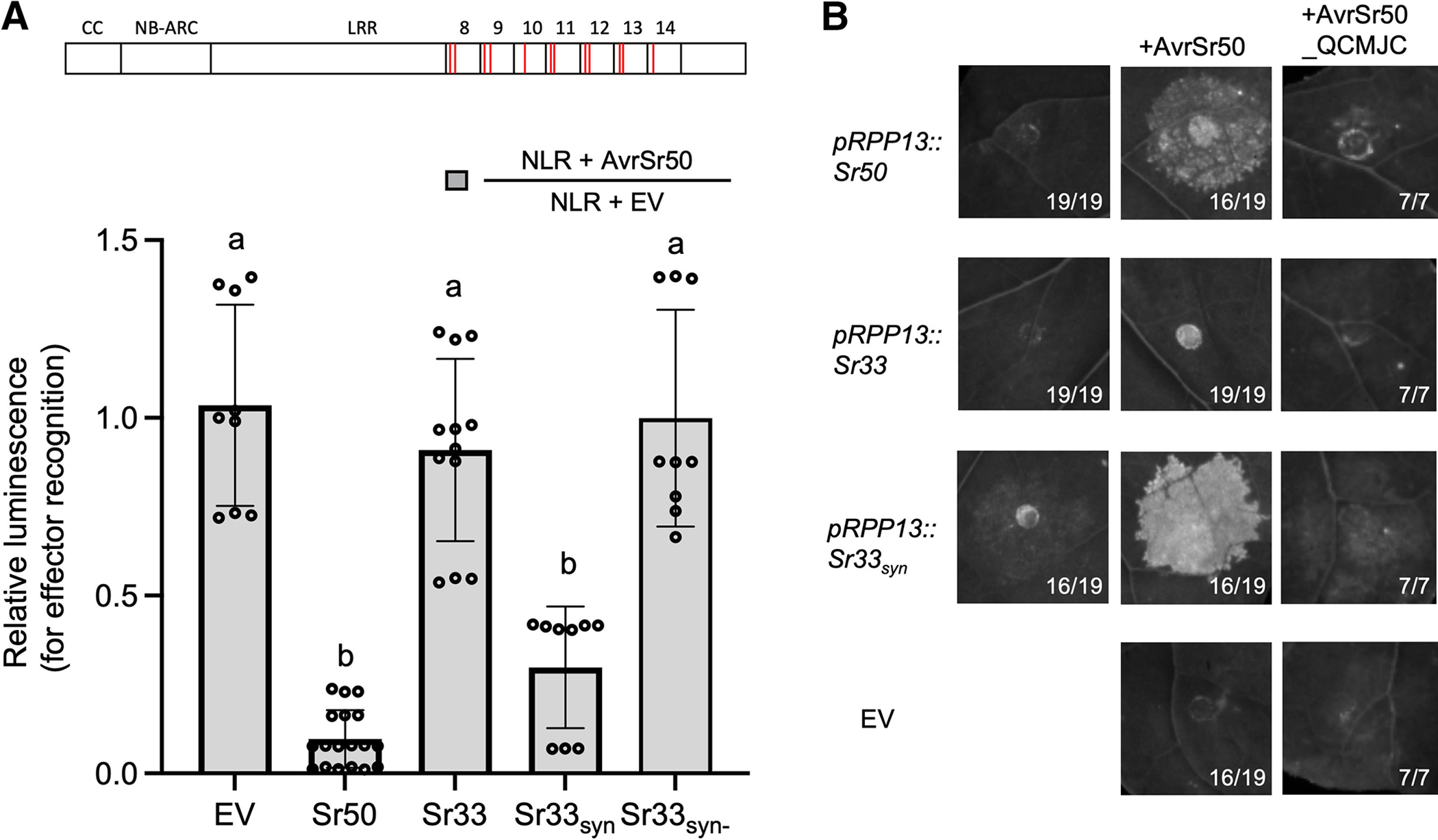Fig. 4.

The transfer of 12 amino acids between closely related nucleotide-binding leucine-rich repeat (LRR) receptors (NLRs) is sufficient to transfer recognition specificity. A, Twelve amino-acid changes on Sr33 are sufficient to enable recognition of AvrSr50, as exemplified by the synthetic NLR Sr33syn. Sr33 is unable to induce cell death in wheat protoplasts in response to AvrSr50. In contrast to Sr33, Sr33syn with 12 amino-acid substitutions is able to recognize and execute cell death in an AvrSr50-dependent manner. The synthetic NLR Sr33syn−, which contains only 11 amino-acid substitutions does not recognize AvrSr50. Schematic above the graphs shows Sr33syn and all substitutions are marked as red lines in the LRRs. Numbers above the LRR signify which LRR repeat this region corresponds to. Luciferase activity was determined approximately 36 h after transfection, as a proxy for cell death. The relative luminescence reflects the changes driven by effector recognition, and the low relative luminescence level represents cell deaths by effector recognition. This value was obtained by normalizing the luminescence of each NLR construct (or empty vector [EV] as a control) in the AvrSr50 co-transfection by the luminescence of that NLR construct in the EV co-transfection. All values obtained in at least three independent experiments are indicated by dots, and error bars indicate standard deviation. The equality of group means was assessed by one-way analysis of variance and subsequent Tukey post-hoc tests. The samples assigned the same letter (a or b) do not show statistically significant differences (P ≥ 0.05), while those assigned different letters do (P < 0.05). B, Sr33syn induces cell death in response to AvrSr50 in Nicotiana benthamiana. None of the NLRs initiated cell death in response to the effector variant AvrSr50_QCMJC. Leaves of 4- to 5-week-old N. benthamiana plants were infiltrated with Agrobacterium tumefaciens carrying NLRs and effectors at an optical density at 600 nm of 0.3 and 0.4, respectively. UV images were taken on a BioRad Gel Imager 3 to 5 days after infiltration. Numbers on images correspond to the numbers of leaves that showed the depicted phenotype. Expression of NLRs was driven by the pRPP13 promoter, whereas effectors were driven by p35S.
